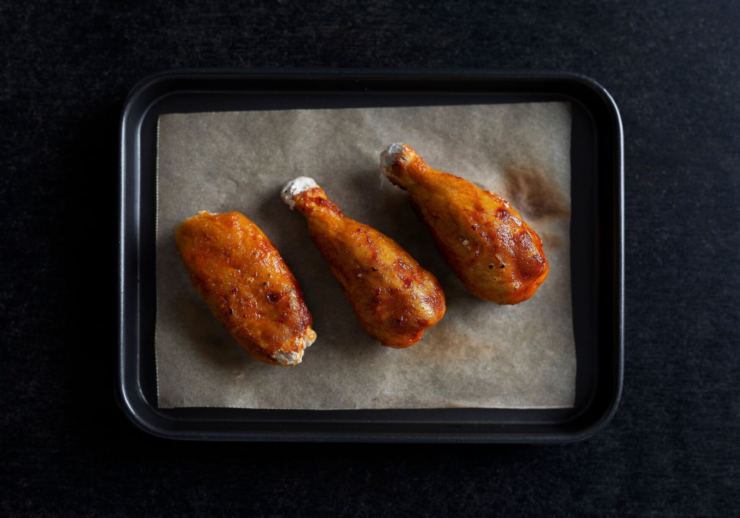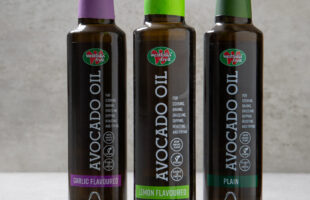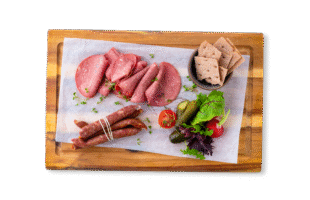
Courtesy of Nourish Ingredients
By Cath Isabedra
In an era where the global food industry is rapidly pivoting towards sustainable and innovative solutions, it becomes imperative to explore and understand the advancements driving this transformation.
This interview with James Petrie, CEO of Nourish Ingredients, is motivated by the necessity to spread awareness and knowledge about one such groundbreaking innovation – Tastilux.
As the world increasingly embraces plant-based diets, Tastilux emerges as a crucial development in this sector, offering an animal-free fat that promises to redefine the taste and texture of plant-based proteins.
Our conversation with Petrie is about understanding the scientific intricacies behind Tastilux and highlighting the importance of such innovations in the context of global dietary shifts and environmental sustainability.
We aim to shed light on the future of food technology and its potential to impact consumer choices, health trends, and ecological footprints. This interview is a step towards empowering our readers with the knowledge of cutting-edge food technology, underscoring the significance of innovation in meeting the challenges of modern dietary needs and environmental concerns.
Could you elaborate on the scientific process and innovation that led to the creation of Tastilux, especially the precision fermentation technique used to derive this animal-free fat?
Most alternative fats simply can’t replicate the rich, authentic flavour of cooked meat. Rather than taking a plant-based approach, we analysed the most flavourful and potent animal fats found in meat in their uncooked state.
We then identified where we could find these in nature without the animal. We located these molecules in fungal strains found in Australian soil. By fermenting only the most potent fats, we’re able to scale at low inclusion and high impact rates.
Tastilux aims to address taste and texture challenges in plant-based proteins. Can you describe how Tastilux differs from existing plant-based fats in replicating the flavour and texture of traditional meat?
Tastilux acts as a pre-flavour and provides an authentic animalic cooking and eating experience with plant-based proteins. When a plant-based protein is combined with Tastilux ahead of the cooking process, it goes through the natural Maillard reaction; this reaction works to create the meaty flavour, aroma, and taste we expect from a piece of meat.
By creating the same potent molecules as those found in traditional meat, Tastilux behaves in the same way during the cooking process and results in an animalic experience.
How do you foresee Tastilux influencing consumer adoption of plant-based proteins? What feedback have you received from early product demonstrations, like the plant-based chicken wing showcased at SXSW Sydney?”
While the first generation of alternative proteins made waves, especially with vegans and vegetarians, these alternatives don’t stack up when compared to the real thing. For the sector to grow quickly and go mainstream, alternative proteins must be able to win the hearts and taste buds of even those who love the taste of meat and dairy.
This is where Nourish Ingredients comes in.
Nourish Ingredients fats transform alternative proteins, making an animal-like impact in an animal-free way. Tastilux has achieved rave reviews through all of our product demonstrations so far.
In lab tests, we were able to turn a basic, bland vegan patty into a chicken burger that tastes as good as the real thing, delivering the same aroma, taste and experience that will pass any blind test. At SXSW, everyone who tried the chicken wings was blown away by how realistic it tasted!
What is the nutritional profile of Tastilux compared to traditional animal fats and other plant-based fats? How does it align with current dietary trends and health concerns?
We are currently assessing the nutritional profile of our fats; we predict that the inclusion of Tastilux into plant-based proteins will allow our partners to remove a variety of unnecessary adjectives and flavours, leading to a shorter, more natural ingredient list.
Can you discuss the environmental and sustainability benefits of Tastilux? How does it contribute to reducing the ecological footprint of the food industry?
We aspire to a more sustainable food system where plant-based food options aren’t a compromise but an elevation. Where the taste, functionality, and nutrition of these products not only compete but surpass their traditional counterparts. In the pursuit of this, our potent animal-type lipids act as the vehicle to change – providing the missing ingredients to capture the tastebuds of mainstream consumers who enjoy traditional animal products.
Nourish Ingredients is working with global food manufacturers to incorporate Tastilux. Can you share insights into these collaborations and how they’re shaping the future of plant-based proteins?
Nourish Ingredients is in conversation for partnerships with global ingredient companies and manufacturers of plant-based products to incorporate Tastilux. By taking a B2B approach, we aim to ignite the uptake of plant-based proteins to the everyday consumer by providing an authentic experience.
How is Tastilux being scaled for commercial use? What challenges and opportunities do you foresee in this process?
Tasilux is being scaled for commercial use through strategic partnerships with companies around the world. For example, we just announced that we have selected Singapore as our APAC hub and we are partnering with ScaleUp Bio. This partnership will support 10,000 litre batches of fermentation capacity as well as 100 litres of thermal processing, to successfully scale production of specialty fats and unlock flavour for the next generation of plant-based proteins.
Similarly, in the United States, we partnered with Boston Bioprocess (Boston Bio). Within the first three months of this partnership, Boston Bio successfully scaled up the fermentation and downstream process, including cell harvesting and drying, from bench scale to 500L, providing a significant boost to the product development timeline.
By establishing our presence in these key geographies where we are seeing immense innovation around alternative proteins, we’ll be able to more easily work with local food regulators ahead of public release.
Following Tastilux, what are the future goals and potential innovations Nourish Ingredients is exploring in the plant-based food sector?
We hold ambitious global aspirations, and our actions reflect this vision. On top of our pilot facility in Singapore, we’ve established numerous strategic partnerships in the UK and the US. The challenge we are tackling transcends borders, making it imperative for us to adopt a truly global perspective. Following that, we have several exciting breakthroughs in the dairy space, which we cannot wait to unveil.
What market research or consumer insights drove the development of Tastilux? How does it cater to the specific taste preferences and expectations of consumers who are hesitant to switch to plant-based proteins?
The key consumer problem we are trying to address is that plant-based products fail to win over a majority of consumers who enjoy the taste of animal products.
Nourish Ingredients caters to this demographic by creating products that, when incorporated into plant-based proteins, provide a truly authentic animalic experience. By creating the same fat molecules as those found in animals, Nourish Ingredients fats behave in the exact same way as animal fats when they cooking.
Could you discuss the regulatory compliance and safety testing processes for Tastilux? How does Nourish Ingredients ensure that Tastilux meets global food safety standards, especially considering its novel production method?
We are actively engaged in the regulatory processes essential for our products. It’s important to note that not all of the solutions we are developing require extensive regulation, allowing us to expedite certain aspects of our work.
We are currently navigating the regulatory landscape, drawing upon our extensive experience in Omega-3 oils. This background equips us with the knowledge and tools to effectively navigate the regulatory pathways.
It’s clear that Tastilux is set to play a pivotal role in the future of plant-based proteins. Through a novel approach of harnessing precision fermentation and replicating animal fat molecules, Tastilux is not just an alternative fat—it’s a game-changer in delivering an authentic meat experience in plant-based foods.
Petrie’s insights reveal a deep understanding of the market dynamics and consumer preferences driving the development of Tastilux. As Nourish Ingredients continues to collaborate globally and navigate the regulatory landscape, the potential of Tastilux to transform the plant-based protein market is immense.
With its impressive ability to mimic traditional meat’s flavor and texture, coupled with its environmental and nutritional advantages, Tastilux is poised to be a cornerstone in the shift towards sustainable, plant-based eating.

James Petrie, Co-founder and CEO, Nourish Ingredients
Dr. James Petrie, Co-Founder & CEO of Nourish Ingredients, is a world-class scientist with decades of experience in precision fermentation. Since 2019 James has been using his expertise to revolutionize the plant proteins space. Through breakthrough science and a focus on the most potent fats found in nature, Nourish is making plant proteins delicious without the animal. Their fats are set to make a transformative impact and are key to creating a smarter, more sustainable, more diverse food system.
Prior to founding Nourish, James spent 14 years at CSIRO, Australia’s premier research institute. James was a part of the team that spearheaded the creation of omega3 canola, the world’s first plant-based and sustainable source of omega 3.
This story first came out in our “Bridging Eras: Marrying Tradition With Innovation in Today’s Dynamic Food Landscape” issue.









